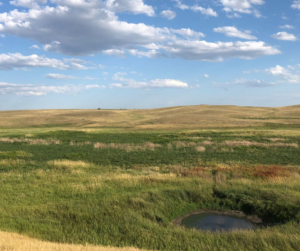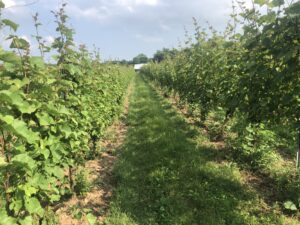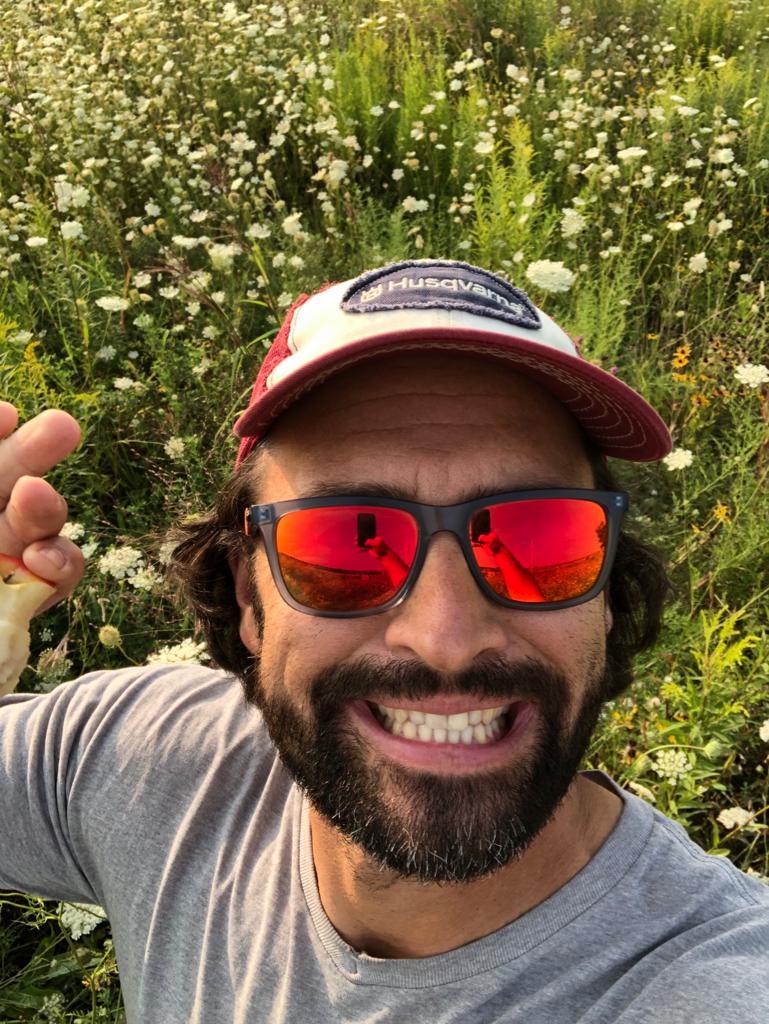
Will widespread adoption of regenerative agriculture automatically lead to the rejuvenation of rural communities?
By Derek Leahy
I have been given this amazing opportunity to travel Canada and interview agricultural producers about regenerative agriculture for the Rural Routes to Climate Solutions podcast. I’ve never done anything like this before so when this opportunity came knocking about six months ago turning it down didn’t cross my mind.
I recognize most people don’t get opportunities like this. Heck, I’ll probably never get another one like this. I thought while I am on the road for the podcast I could and maybe even should share with folks what I am seeing in terms of regenerative agriculture across the country. This is my first attempt at sharing what I’ve seen and noticed. I call this one Regenerating Rural Opportunities.
So far for the series we’ve been to Lightfoot & Wolfville Vineyards in Nova Scotia, Ferme Terre Partage in News Brunswick and Axten Farms in Saskatchewan where we interviewed agricultural producers Rachel Lightfoot, Rébeka Frazer-Chiasson and Tannis and Derek Axten, respectively, about their regenerative agriculture practices—land management practices that replenish the land but at the same time allow producers to take off a ‘crop’ from that land in all the forms that can take (i.e. food, fibre, medicine, etc.). I say “we” because the podcast series is part of a larger project called Stories of Regeneration led by Regeneration Canada. Over the next couple of months, Regeneration Canada will host farm-to-table events (Alberta, yours is coming up in September) and create short films on the same producers I am interviewing for the series.
The three farms I went to could not have been more different: a vineyard in Nova Scotia, a vegetable farm with livestock in New Brunswick and a grain farm in southern Saskatchewan. However, the agricultural producers I met—Rachel, Rébeka, Tannis and Derek—still had a lot in common.
livestock in New Brunswick and a grain farm in southern Saskatchewan. However, the agricultural producers I met—Rachel, Rébeka, Tannis and Derek—still had a lot in common.
 livestock in New Brunswick and a grain farm in southern Saskatchewan. However, the agricultural producers I met—Rachel, Rébeka, Tannis and Derek—still had a lot in common.
livestock in New Brunswick and a grain farm in southern Saskatchewan. However, the agricultural producers I met—Rachel, Rébeka, Tannis and Derek—still had a lot in common.The one thing that I wish they did not have in common is this growing season hasn’t been kind to them and that is putting it lightly. Drought in the Prairies and way too much precipitation in the Maritimes is making things extremely challenging on all three farms. When you hear this and see the looks on people’s faces when they talk to you about the weather, you begin to wish there was some magical way to share sunshine and moisture across the country.
All three farms are in the value-added game to varying degrees. For Rachel and their beautiful vineyard on the Atlantic coast, their value-added product—wine—might be something you just have to do in the wine grapes growing business (I don’t know much about viticulture). For Rebeka to make hot sauces from her vegetables or for the Axten’s to build a seed-cleaning plant and flour mill for their crops is something I haven’t come across too often over the last six years of doing the podcast. It has me wondering if producers owning, operating and participating directly in the value-added side of their agricultural products is one of those key ‘puzzle pieces’ for accelerating regen ag.
[Aside: just a quick heads up on how my brain works. My brain is particularly fixated on how to increase adoption rates of regenerative agriculture (so is Rural Routes. Our Regenerative Agriculture Lab is a good example of that). What is it going to take? What are the key pieces of the puzzle to make widespread adoption of regen ag across the agriculture sector a reality? These are the kinds of questions my brain is mildly obsessed with (I won’t lie to you, ‘scheming’ about these things is fun for me). So if you were hoping these writings are going to be a deep dive into the regen ag practices or principles, I am sorry to disappoint you, but it is unlikely that is going to happen (that’s what the podcast is for though).]
Despite running very different agricultural operations, Rachel, Rébeka, Tannis and Derek Axten use some of the same practices too. All three farms use cover crops, integrate livestock and apply compost.
The fourth and final commonality between these three farms is the one I can’t seem to get out of my head. I decided to call it regenerating rural opportunities. I guess to understand this one it is important to understand we are living in one of the first times in human history that more people are living in cities than in rural areas. Rural communities are aging out and depopulating in Canada. A shrinking population can also mean a shrinking number and diversity of opportunities for the people who remain whether they are economic or social opportunities.
Rebeka, Rachel, Derek and Tannis and their families and business partners working with them are creating opportunities for their communities. I am not talking about the opportunity to purchase and consume foods that have been produced regeneratively here. The Axten’s seed cleaning plant and flour mill has created job opportunities for people in Minton, Saskatchewan (population: 60) and the surrounding area (population: 217). Rachel’s vineyard alone (they also raise livestock and grow vegetables) employs approximately 80 people, albeit seasonally.
Rebeka’s farm is a co-operative on her family’s land that has created the opportunity for people to farm who don’t have access to land. Rebeka mentioned in the interview that her and her father, Jean-Eudes Chiasson, were calling agricultural colleges and programs at one point looking for aspiring agricultural producers to share their land, equipment and knowledge with. In some cases, the co-operative also provides opportunities for family members and neighours to sell their products.
So this is the thought my brain is fixated on right now: will widespread adoption of regenerative agriculture automatically lead to the rejuvenation of rural communities? None of the five principles of regenerative agriculture say anything about rural socio-economic development. They are very much guiding principles for agricultural practices (there is a sixth principle, depending on who you are talking to, that could potentially apply to rural development). And yet, based on the three farms I visited last July, regenerating the land and ecosystems and regenerating communities seem to go hand-in-hand.
I’m very curious to see how this theory holds up when I travel to farms and ranches in other parts of Canada for the Stories of Regeneration podcast series.
Next stops: Manitoba and Ontario.
—

